- Home
- Selling Firewood
- Firewood Moisture Meter
Firewood Moisture Meter
This post may contain affiliate links so I earn a commission.
A firewood moisture meter can be used to determine the moisture content of your firewood, but are they a necessity or just a novelty?
A moisture meter is possibly the most important stove tool to help you ensure that you get the most out of your fireplace or wood burning stove.
The tool will help you make sure that you are getting well-seasoned firewood.
Do not get it wrong – many firewood suppliers do their job right.
When they tell you that their firewood is seasoned, it is.
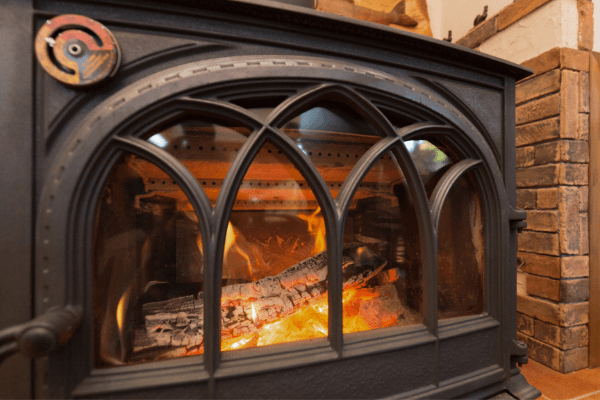
However, you can also find that these suppliers are highly booked, so try to order your firewood during the summer.
A firewood moisture meter will help you ensure that their firewood is well-seasoned and help you determine how well-seasoned it is.
On the other hand, you will also find suppliers out there who claim their firewood is well-seasoned when it is really far from it.
The time you will realize it might be when you are burning it.
Burning unseasoned firewood will cause the accumulation of creosote in your chimney, which increases the risk of chimney fires.
It also reduces the life of your chimney and wood burning stove.
Unseasoned firewood also generates less heat and produces a lot of particulates that are bad for your health.
If the firewood turns out to be unseasoned after using your firewood moisture meter and the supplier claims that it is well-seasoned, you should either pay less for the pile and stack it until it seasons, or return it to the supplier.
How To Tell If Your Firewood Is Seasoned
Seasoned firewood is considered to have a moisture content of 20% or less.
Sounds simple enough, right?
But what exactly is 20%, and how can you tell if your firewood meets this standard?
One of the easiest (and most trusted) ways to find out if your firewood is seasoned is simply bang two pieces of the wood together.
What sound or pitch do you hear?
If you hear a ringing sound or something similar to two baseball bats hitting each other, the wood is seasoned and ready for use.
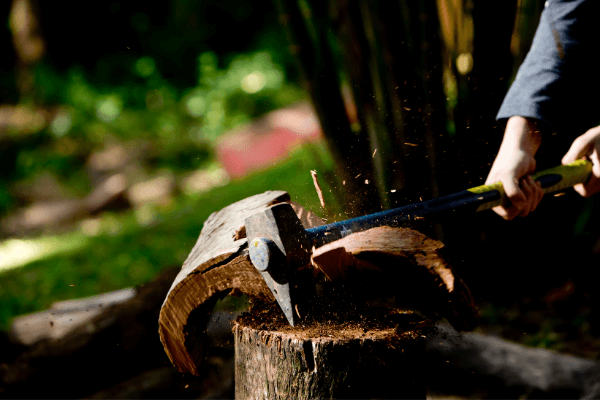
If you bang the two pieces of wood together and hear a deep thud, the firewood is still wet and needs more time to season.
Moisture content is perhaps the most crucial thing to consider when determining the amount of heat your firewood produces.
That is why a firewood moisture meter is very important.
A firewood moisture meter can also help monitor how well your wood is seasoning and which stacking methods work best.
When you have a lot of firewood to process and season, it is necessary that you do it in the most effective manner.
Using A Digital Meter
If you're looking for something more precise and need an actual digital readout of the moisture in your firewood, a firewood moisture meter can be used.
The device is pretty simple to use, and it is fairly affordable if you choose one of the cheaper models.
Moisture meters are not specifically made just for firewood.
They can be used to test the moisture levels in a variety of different materials.
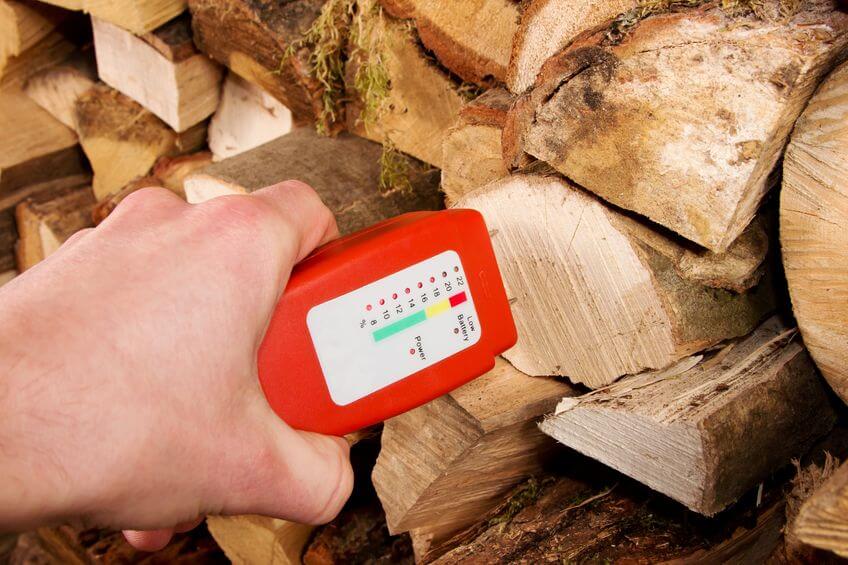
Depending on the model you choose, they cost around $15-$35 and have an accuracy of around 1-3%, which is more than enough for firewood.
To test your firewood, simply push the pins into the wood and wait for a reading.
Remember, don't just stick the meter into the ends of your firewood.
To get the most accurate reading, split the wood and test the center.
The center of the log will contain the most moisture.
I personally like to test both the end and the middle of the log to see both results.
How A Firewood Moisture Meter Works
A firewood moisture meter works by measuring the resistance of your firewood.
The resistance determines the conductivity of the wood.
Conductivity is the ability of electrons to flow through the wood. A high conductivity shows a low resistance.
The moisture in a piece of firewood contains dissolved nutrients and salts that allow electrons to flow through it and conduct electricity.
A firewood moisture meter contains two sharp electrodes pushed into the wood.
The resistance between these electrodes will show the amount of moisture in your wood.
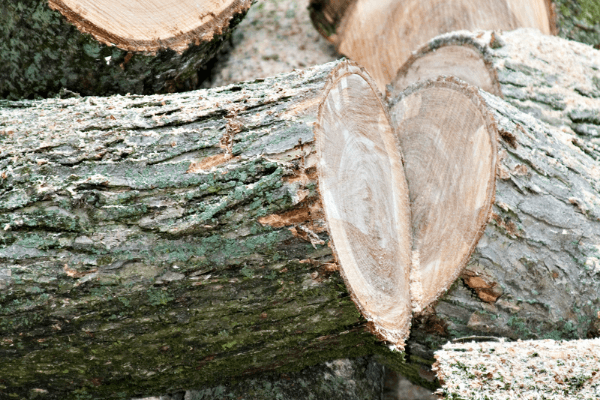
The distance between electrodes is important for this test.
You should put the electrodes at least 1 inch apart for effective reading.
Keep in mind that the water might be contained in the layers between the wood and the grain.
So, you should drive the electrodes deeper into the wood to ensure that the wood is dry and no single layer of your firewood is withholding moisture.
The firewood moisture meter converts the resistance into a percentage moisture content.
Common Concerns
On a lot of the cheaper devices, the sharp pins could bend or break when you try to drive them into a tough piece of wood like oak or beech.
Some manufacturers offer replaceable pins.
A moisture meter can be purchased online or at some large home improvement stores.
Shopping online will give you the largest variety and options to choose from.
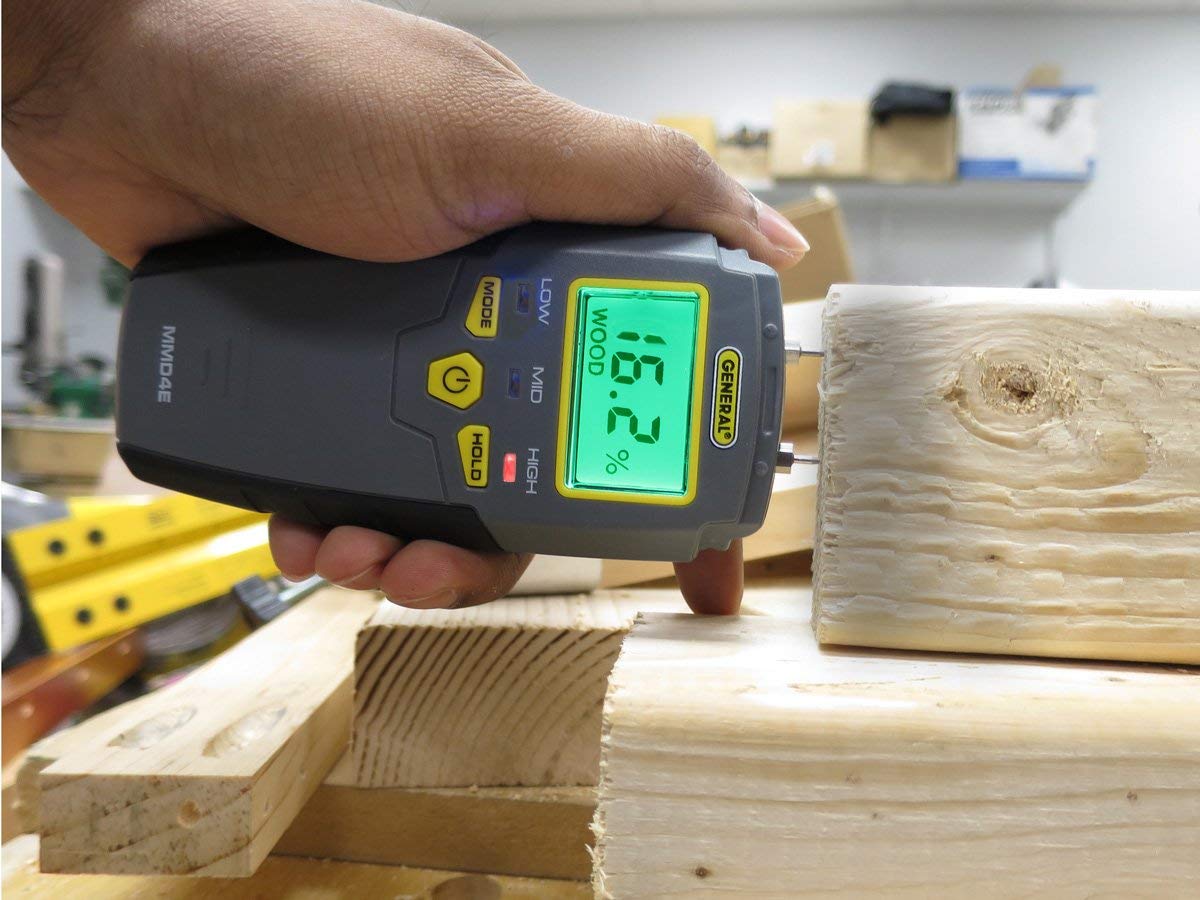
I personally own the General Tools Moisture Meter, and I love it.
I've used it to test everything, from firewood to the subfloor in my home.
If you sell firewood and you have customers who want to see the moisture content of the wood they are buying, one of these meters might be a good investment.
Overall - Firewood Moisture Meter
Is it a necessity to own one of these moisture meters?
No, you can still use, sell and purchase seasoned firewood by understanding what it looks like and knowing how to identify it.
However, if you're looking for a neat little gadget that can give you the actual moisture percentage contained inside your firewood, a moisture meter is definitely something to consider.
The next time you get your firewood delivered, take a few logs, split them with your hatchet or ax, and use your firewood moisture meter to take the moisture readings.
Well-seasoned firewood should have a moisture content of about 20% and below.

About the Author
Obsessed with firewood, Nick is behind over 350+ of Firewood For Life's articles, as well as countless reviews, guides and YouTube videos to help readers like you reduce heating costs and create the perfect fire.


